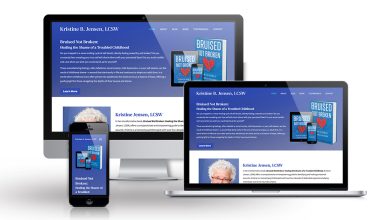Immersive Marketing: Integrating AI-Generated VR and AR Video Content

In an era where digital engagement is paramount, immersive marketing through Virtual Reality (VR) and Augmented Reality (AR) stands out as a groundbreaking strategy. Powered by Artificial Intelligence (AI), VR and AR video content is transforming the marketing landscape, offering interactive experiences that engage, educate, and convert audiences like never before.
This blog delves into how AI-enhanced VR and AR are being integrated into digital video marketing strategies, providing brands with the tools to create deeply immersive and memorable campaigns.
Introduction: The New Frontier in Digital Marketing
Step into a world where your marketing message isn’t just seen or heard but experienced. AI-generated VR and AR video content offers a leap into this new reality, creating a space where consumers can interact with your brand in a fully immersive environment. Best AI Text to Video Generators
This technology doesn’t just capture attention; it captivates imagination, setting the stage for transformative marketing experiences that leave lasting impressions.
Enhancing Engagement with AI-generated VR and AR
- Creating Personalized Immersive Experiences
AI-driven technologies enable the customization of VR and AR experiences, tailoring content to individual preferences and behaviors, which significantly enhances user engagement.
- Example: A real estate company uses AI to create personalized virtual tours, allowing potential buyers to explore properties tailored to their style preferences and price range in VR.
- Impact: Personalized VR tours can increase conversion rates by up to 80%, as they provide a more relevant and engaging experience for users.
- Interactive Product Demonstrations
AI-enhanced AR allows customers to visualize products in their own space or interact with a virtual representation, providing a hands-on experience from the comfort of their home.
- Application: A furniture retailer implements an AR app that lets customers visualize how different furniture pieces would look in their living room, adjusting colors and styles through AI recommendations based on their past preferences.
- Benefit: Such interactive demos can boost customer confidence in purchase decisions, reducing return rates and increasing overall satisfaction.
Overcoming Challenges in VR and AR Content Production
- Streamlining Complex Production Processes
AI streamlines the video production of VR and AR content by automating tasks such as rendering, object recognition, and animation, making these advanced technologies more accessible and cost-effective for marketers.
- Strategy: Use AI tools to auto-generate realistic 3D models and environments based on 2D images and descriptions, significantly reducing the time and expertise required to create immersive content.
- Advantage: This automation not only lowers costs but also scales up the production capabilities without sacrificing quality.
- Ensuring Cross-Platform Compatibility
Ensuring that VR and AR content operates seamlessly across different devices and platforms can be a significant challenge, impacting user experience and content reach.
- Solution: Develop AI algorithms that optimize content in real-time based on the user’s device capabilities, ensuring smooth performance and high-quality visuals.
- Result: Enhanced compatibility maximizes the reach and effectiveness of VR and AR campaigns, ensuring a consistent experience for all users.
Best Practices for Integrating AI-Generated VR and AR into Marketing
- Focus on User-Centric Design
Design immersive experiences with a clear focus on usability and user enjoyment, ensuring that interactions are intuitive and add value to the consumer journey.
- Best Practice: Incorporate user feedback in the development phase to refine UX/UI elements, ensuring the VR or AR environment is engaging and easy to navigate.
- Goal: To create experiences that not only impress but also foster deeper emotional connections with the brand.
- Continuous Testing and Analytics
Implement continuous testing and use AI-powered analytics to gather data on how users interact with VR and AR content, using insights to refine and enhance the experiences.
- Method: Leverage heat maps and interaction tracking in VR environments to identify hotspots and areas where users engage most frequently.
- Purpose: This data helps marketers optimize layouts and content placement, enhancing the overall effectiveness and user engagement of the campaigns.
Conclusion: The Transformative Potential of AI-Enhanced VR and AR
AI-generated VR and AR are redefining the boundaries of digital marketing, offering new ways to engage and delight customers. As brands look to build deeper connections with their audiences, the integration of these technologies provides a powerful tool for creating not just advertisements but adventures. With AI’s help, the next wave of marketing isn’t just immersive; it’s intuitive, interactive, and incredibly impactful.









